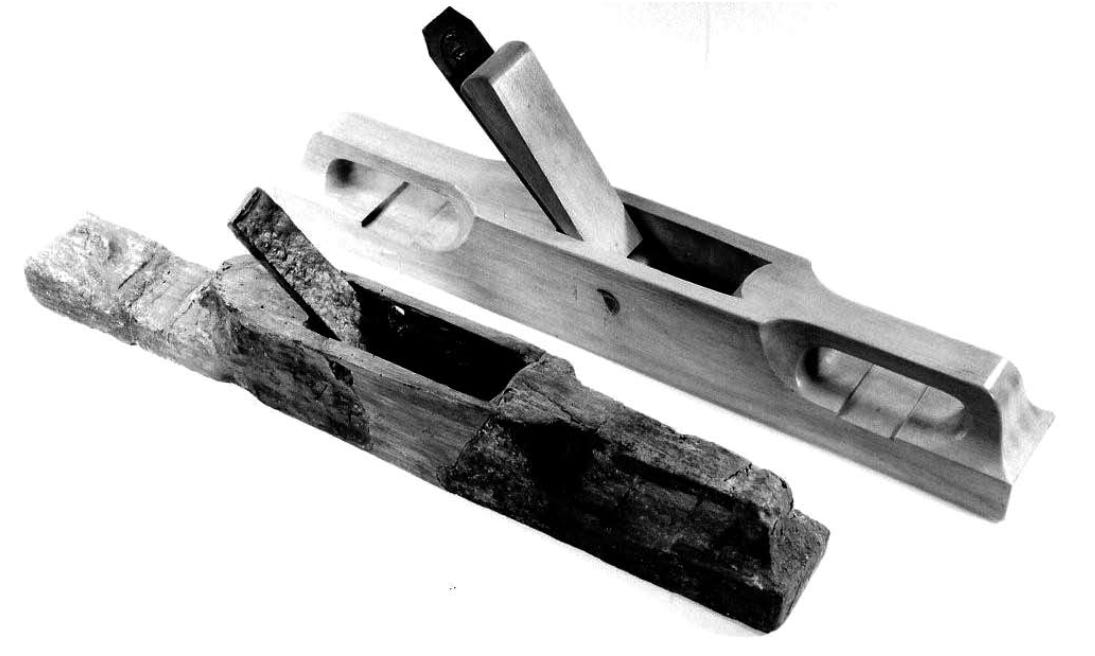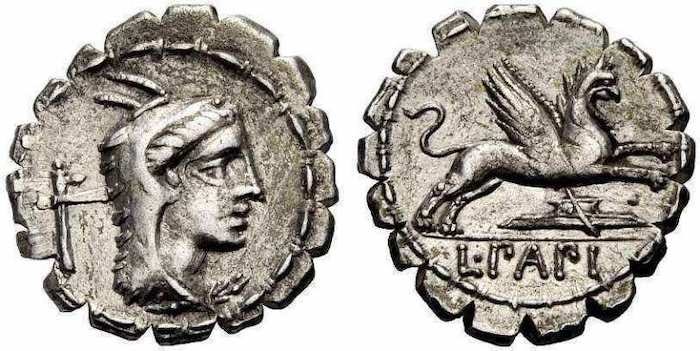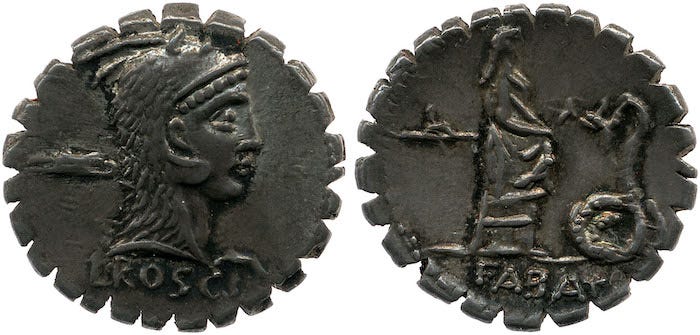Planes on Roman Coins and Sticking Crown Molding
"The carpenter dresses his plank, the tongue of his foreplane whistles its wild ascending lisp." — Walt Whitman, 1892
The oldest depictions of planes I know of are found on silver Roman coins dating from the first century BC, right as Rome was developing from a republic to an empire. The planes appear as symbols known as control marks. Control marks were likely used to identify the individual dies used to strike the coins; animals, tools, musical instruments and other day-to-day items were commonly depicted. The planes are simplified renditions with few details, but each clearly show the overall shape of the plane and raked irons. As the historian Roger B. Ulrich notes, "The fact that variants exist in these depictions is an indication that the tool already existed in diverse shapes and sizes and that it was a common enough tool to be recognizable for what it was even when rendered schematically."

Cornice plane? Crown molding plane? Let's call them wide molding planes. Planing, or sticking as it is called, moldings can be done with rounds and hollows. But if you need a lot of a specific style of wide molding — four, five, or even six inches wide — you turn to the biggest planes. These are moldings that are used to cover the corner where two flat surfaces meet, either the juncture of a wall and ceiling or on a piece of furniture. Because of the amount of wood being planed it's typically a multi-person job: one person to guide the plane and a second person (or more) to pull the plane forward through the wood. Here's cabinetmaker Frank Klausz, the crew at Colonial Williamsburg, and Richard Maguire and Richard Arnold showing how these beasts are used.
— Abraham





